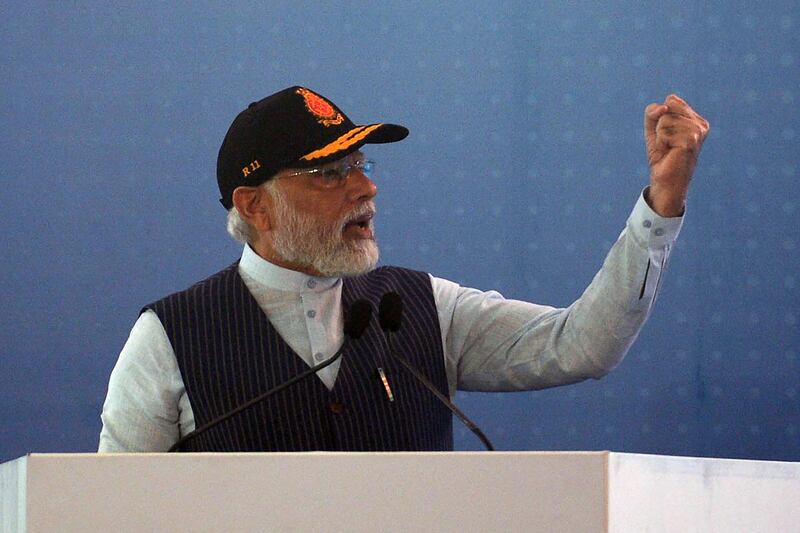The Indian navy has commissioned its first indigenously-built aircraft carrier, though it will not become battleworthy until late next year as its onboard combat aircraft have yet to be integrated with the warship.
Developed by the navy’s Warship Design Bureau, the 262m long and 62m wide INS Vikrant (meaning courageous) took Cochin Shipyard Limited, on India’s southwest coast ,17 years to build.
“Vikrant is not just a warship but a testament to the hard work, talent and commitment of 21st century India,” prime minister Narendra Modi declared whilst commissioning the carrier on Friday at the shipyard in Kochi. It is a unique reflection of India becoming self-reliant, he added.
Delayed by nearly seven years and plagued by a six-fold rise in construction costs to €2.5 billion, Vikrant’s 14 decks are manned by 1,700 personnel, including 200 officers. It features an advanced hospital and multiple kitchens.
RM Block
The carrier has an operating range of 13,900km and has the potential to embark 30 fixed-wing fighters and diverse helicopters. However, its Russian aviation flight complex, which manages the aerial assets, has yet to be fully incorporated onto the platform.
The navy’s vice-chief-of-staff, Vice-Admiral N M Ghormade, told reporters recently that carrier-landing trials by Russian MiG-29K fighters would begin in November, and be completed by mid-2023. Vikrant would become fully operational by that year-end.

However, he said MiG 29Ks would not eventually constitute the carrier’s air arm as the navy had only recently launched the complex procedure of acquiring 26 new fighters from either France or the US.
“Because of India’s typically disjointed decision-making process the selection of an aircraft got delinked from the carrier project,” former navy chief-of-staff, Admiral Arun Prakash said. The navy knew when the ship was being commissioned, so the fighter selection process and its procurement negotiations should perhaps have started three or four years earlier, he added.
Other senior navalists concurred, maintaining that without suitable aircraft the carrier could not be optimally exploited.
The Indian navy has operated carriers since 1961 but at present deploys INS Vikramaditya, its sole refurbished, second-hand Soviet-era carrier that is incessantly in need of upgrades and maintenance.
The force’s operational doctrine envisages carrier deployment in India’s two adjoining seas, and further afield in the strategic Indian Ocean region, principally to contain China’s navy.
Mr Modi also unveiled the navy’s new ensign, which disassociates itself from its colonial royal navy precursor flag featuring the Cross of St George against a white background. It now comprises India’s tricolour flag in its left quadrant alongside a blue octagon encasing the national Ashoka Lion emblem atop an anchor with the navy’s Vedic mantra motto calling upon the sea gods to be propitious.


















